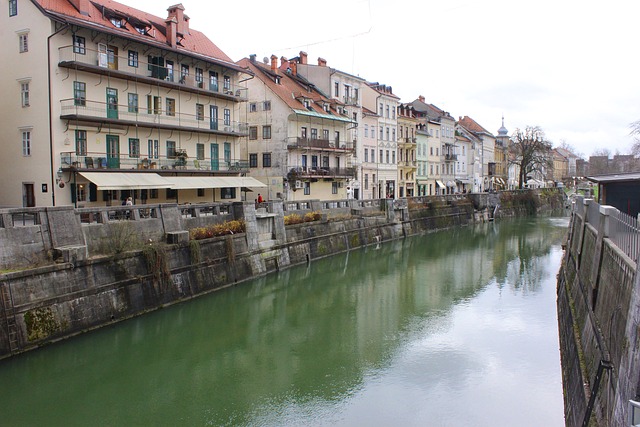On April 15th and March 15th, Karachi experienced two significant fires, one in a busy market and the other in a residential high-rise. Both incidents resulted in substantial property damage and displaced many individuals. The market fire involved exploding gas cylinders and was followed by discussions on improving fire safety protocols. The high-rise fire, also in March, required an extensive response due to its intensity and potential for causing casualties, but fortunately, no one was harmed. An industrial fire on April 15th at Sindh Industrial Trading Estate highlighted the need for better safety standards and emergency response capabilities within industrial areas. These incidents have prompted a review of existing fire safety measures across Karachi, revealing gaps in building codes, evacuation strategies, and fire suppression systems. In response, the community has rallied to support affected individuals with aid and shelter, while also pushing for policy reforms, improved fire brigade readiness, and stricter construction safety standards. Local organizations and activists are actively involved in both immediate relief efforts and advocating for long-term solutions to prevent future fires.
Recent fire incidents in Karachi have underscored the importance of robust fire safety measures within the city. A blaze at a bustling market displaced dozens, while a high-rise residential building in Clifton faced a major blaze, highlighting the vulnerability of these structures. Additionally, an industrial fire in the Sindh Industrial Trading Estate brought to light the potential for catastrophic events in commercial areas. These events not only disrupt daily life but also spark discussions on the need for improved fire safety protocols and community awareness initiatives. As we reflect on these incidents, it becomes clear that proactive measures could mitigate such risks, ensuring a safer environment for Karachi’s residents. The recent fires serve as a clarion call to action, emphasizing the necessity of enhancing fire safety infrastructure across the city.
- Fire at Karachi Market Displaces Dozens
- Major Blaze Engulfs High-Rise Residential Building in Clifton
- Industrial Fire in Sindh Industrial Trading Estate Causes Alarm
- Recent Fires Highlight Need for Improved Fire Safety Measures in Karachi
- Community Responses and Local Initiatives Post-Karachi Fires
Fire at Karachi Market Displaces Dozens

On the evening of April 15th, a fire broke out in one of Karachi’s bustling markets, leading to its rapid spread and causing significant disruption. The blaze, which began in a clothing store, quickly engulfed the surrounding shops, resulting in extensive damage to property. Firefighters arrived promptly and worked tirelessly to contain the flames, but not before it had displaced over sixty shopkeepers and workers. The intense heat and smoke caused by the fire destroyed merchandise and equipment worth a considerable sum, and the affected individuals were left with little more than the clothes on their backs. Eyewitnesses reported hearing loud explosions as gas cylinders stored in the market burst, adding to the chaos and intensity of the blaze. The cause of the fire is under investigation, with officials considering various factors that may have contributed to its rapid spread. In the aftermath, community members and local organizations came together to provide immediate assistance, offering shelter, food, and financial aid to those affected. The incident has highlighted the need for improved fire safety measures and better infrastructure within the market to prevent similar occurrences in the future.
Major Blaze Engulfs High-Rise Residential Building in Clifton

On the evening of March 15th, a significant fire broke out in a high-rise residential building located in the affluent district of Clifton, Karachi. The blaze, which started on the upper floors, quickly spread due to the building’s close proximity to adjacent structures and the strong winds that evening. Firefighters from the Karachi Fire Service arrived promptly and engaged in a long and arduous battle to control the fire, which had engulfed several floors of the building by the time they arrived. The inferno resulted in the displacement of numerous residents who were forced to evacuate their homes, leaving behind their personal belongings and cherished possessions. Thankfully, there were no reports of casualties, attributed partly to the timely evacuation carried out by residents and emergency services. The cause of the fire is currently under investigation, with initial suspicions pointing towards an electrical fault in one of the apartments. The incident has highlighted the need for improved fire safety measures and better compliance with fire-safety regulations within high-rise buildings across Karachi.
Industrial Fire in Sindh Industrial Trading Estate Causes Alarm

On April 15th, an industrial fire erupted at the Sindh Industrial Trading Estate, located in Karachi, Pakistan. The blaze, which started in a factory unit around 10 p.m., quickly spread due to the presence of flammable materials. The intense heat and thick smoke from the fire could be seen from miles away, causing alarm among residents and nearby businesses. Firefighting teams from various stations responded promptly, facing challenges such as limited access to the affected area and the risk of secondary explosions from stored chemicals. Despite these obstacles, their swift intervention prevented further escalation of the incident. The cause of the fire is under investigation, with authorities working to determine whether it was due to a short circuit, an act of arson, or an accident involving machinery. The incident highlighted the need for stricter safety measures and better fire-prevention protocols within industrial estates. It also underscored the importance of timely emergency response in containing such fires, which pose significant risks to lives, property, and the environment. Subsequent to this event, there have been discussions on implementing more rigorous safety standards and enhancing the capabilities of fire brigades to handle similar situations effectively.
Recent Fires Highlight Need for Improved Fire Safety Measures in Karachi

A series of recent fire incidents in Karachi has brought to light the urgent need for enhanced fire safety measures within the city. The first incident involved a commercial building where a blaze erupted, causing significant damage and raising concerns about the adequacy of fire suppression systems and evacuation procedures in place. This event underscored the importance of regular maintenance and updates to fire safety infrastructure, as well as comprehensive training for staff on handling such emergencies effectively.
The subsequent fires, including one at a residential high-rise and another at a marketplace, further highlighted the vulnerabilities in Karachi’s existing fire safety protocols. These incidents not only resulted in material losses but also posed risks to human life. The response from local authorities has been swift, with calls for improved building codes, better quality control of construction materials, and increased awareness campaigns regarding fire safety best practices. The collective response from the government, businesses, and community organizations is critical to prevent future occurrences and ensure the safety of Karachi’s inhabitants.
Community Responses and Local Initiatives Post-Karachi Fires

Following the recent fire incidents in Karachi, the local community has shown a remarkable spirit of resilience and collective action. Residents have rallied together to support those affected by the fires, organizing relief efforts that range from distributing essential supplies to providing temporary shelter. Local charities and NGOs have stepped up their initiatives, coordinating with government agencies to ensure swift delivery of aid. These organizations have also taken the lead in advocating for improved fire safety measures within the community, conducting awareness campaigns about the importance of adhering to fire safety regulations and educating residents on preventative measures.
In addition to immediate relief efforts, local initiatives have been instrumental in promoting long-term solutions. Community leaders and activists are working closely with city officials to address underlying issues that contribute to the high risk of fires, such as substandard building materials, overcrowding, and insufficient firefighting infrastructure. These stakeholders are advocating for policy changes and the implementation of stricter safety standards during construction. Moreover, there is a focus on empowering local fire brigades with better training and equipment to enhance their response capabilities in future emergencies. The collective efforts of Karachi’s residents and local organizations serve as a testament to the community’s determination to prevent such incidents from recurring and to support each other during times of crisis.
The series of recent fire incidents in Karachi underscores the pressing need for enhanced fire safety measures within the city. The events at the Karachi market, a high-rise residential building in Clifton, and the industrial estate in Sindh have not only displaced numerous individuals but also prompted a critical reassessment of existing safety protocols. As the community responds with solidarity and local initiatives emerge to address these vulnerabilities, it is imperative that long-term strategies are implemented to prevent future occurrences and mitigate their impact. The collective efforts of city planners, fire services, and residents will be pivotal in transforming Karachi’s urban landscape into a safer environment for all its inhabitants.


